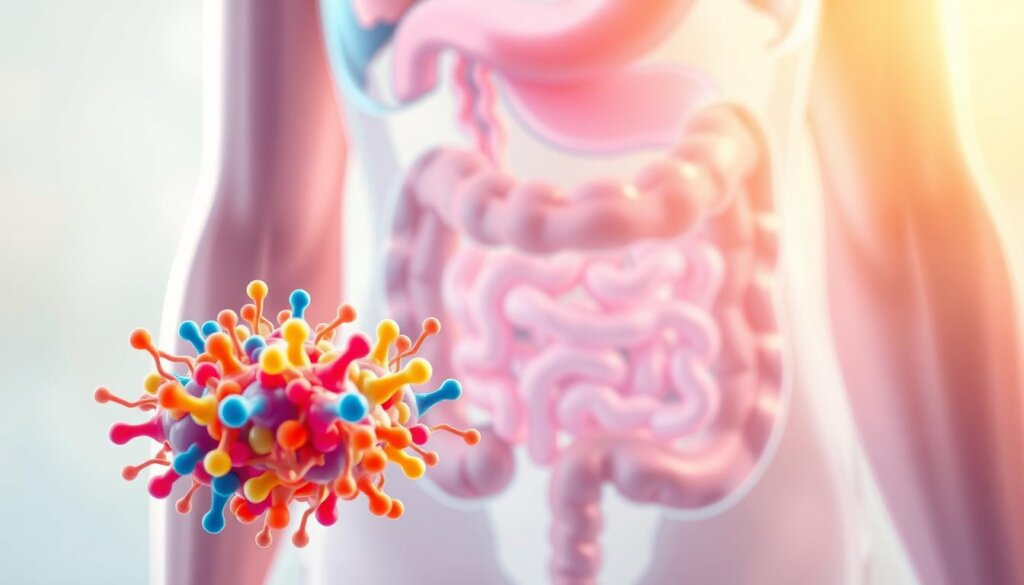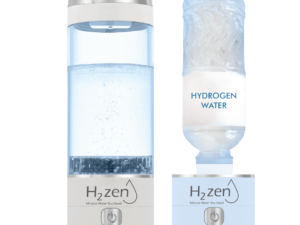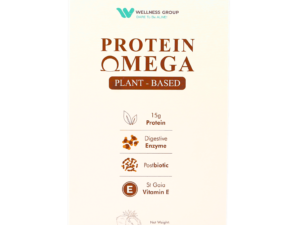Have you ever wondered why some people struggle with bloating and discomfort after enjoying dairy? The answer may lie in gut health. Wellness Group, a trusted name in digestive wellness, offers science-backed solutions to ease these struggles naturally.
In Malaysia, more people are seeking natural ways to support digestion. Symptoms like cramps, gas, and diarrhea often signal a deeper issue. Wellness Group focuses on carefully selected probiotic strains to promote better gut balance.
Their approach combines research with real-world results. By targeting the root cause, they help individuals enjoy dairy without discomfort. This method is gaining attention for its gentle yet effective support.
Key Takeaways
- Wellness Group provides trusted probiotic solutions for digestive health.
- Natural support for dairy-related discomfort is in high demand.
- Gut balance plays a key role in managing digestive symptoms.
- Bloating and cramps can improve with the right probiotic strains.
- Science-backed formulas ensure safe and effective results.
Understanding Lactose Intolerance
Bloating and cramps after eating dairy? The culprit might surprise you. For many, these issues stem from the body’s inability to break down lactose, a natural sugar found in milk products.
What Is Lactose Intolerance?

Click to 了解更多
Lactose intolerance occurs when the small intestine doesn’t produce enough lactase, the enzyme needed to digest lactose. Without it, undigested lactose moves to the colon, where gut bacteria ferment it. This process creates gas (like hydrogen or methane) and acids, leading to discomfort.
“It’s not an allergy—it’s a digestive hiccup. Your body just needs a little help breaking things down.”
Common Symptoms of Lactose Intolerance
Signs usually appear 30 minutes to 2 hours after consuming dairy. Key symptoms include:
- Abdominal pain or cramping
- Excessive gas or bloating
- Nausea or diarrhea
| Type | Cause | Duration |
|---|---|---|
| Primary Deficiency | Genetic (common in adults) | Lifelong |
| Secondary Deficiency | Illness or injury (e.g., gut infection) | Temporary |
Understanding these differences helps tailor solutions. While primary deficiency is permanent, secondary cases may improve with gut healing.
How Probiotics Can Help with Lactose Intolerance
Gut health plays a crucial role in how the body processes milk sugars. When certain bacteria thrive, they help break down lactose more efficiently. This natural process can reduce discomfort and improve tolerance over time.

The Science Behind Enzyme Production
Specific strains, like Lactobacillus acidophilus, produce beta-galactosidase. This enzyme mimics lactase to digest lactose directly in the gut. Fermented dairy products, such as yogurt, enhance this effect by slowing digestion, allowing more time for lactose breakdown.
“Probiotic-rich foods act like a bridge, helping the gut handle lactose more effectively.”
Key Benefits of a Balanced Gut
Clinical studies show significant improvements:
- Reduced gas and bloating by up to 70%.
- Better absorption of nutrients like calcium and vitamin D.
- Stronger gut barrier function against irritation.
| Mechanism | Effect | Example Strain |
|---|---|---|
| Enzyme Production | Breaks down lactose | L. acidophilus DDS-1 |
| Delayed Emptying | More digestion time | Bifidobacterium lactis |
| Gas Reduction | Less bloating | Streptococcus thermophilus |
The NHS recognizes these effects, particularly for symptom management. A balanced microbiome not only aids lactose tolerance but also supports overall digestive wellness.
Best Probiotic Strains for Lactose Intolerance
Not all gut bacteria are created equal—some excel at easing dairy-related discomfort. Research highlights specific strains that enhance lactose breakdown and reduce symptoms. Choosing the right ones can make a noticeable difference.
Lactobacillus Acidophilus: A Top Performer
L. acidophilus is a standout for lactose digestion. Strains like NCFM® and DDS-1 produce beta-galactosidase, an enzyme that mimics lactase. Clinical trials show they improve stool consistency and reduce bloating by up to 70%.
Rosell-52, another potent variant, strengthens the gut barrier. This reduces inflammation, making it easier to handle dairy. For targeted support, studies recommend formulas with these strains.
Bifidobacterium Strains and Their Role
Bifidobacterium species, like B. lactis BB-12®, thrive in the colon. They boost β-galactosidase activity, helping metabolize undigested lactose. Within weeks, users report less gas and better tolerance.
- B. animalis: Increases enzyme levels rapidly.
- B. longum: Supports gut barrier function.
Multi-strain supplements combine these benefits. Pairing acidophilus with Bifidobacterium creates a synergistic effect for comprehensive relief.
What Research Says About Probiotics and Lactose Intolerance
Science continues to uncover how gut bacteria influence digestive comfort. Rigorous studies now pinpoint specific strains that ease dairy-related symptoms. This evidence reshapes how we approach dietary challenges.

Clinical Studies Supporting Probiotic Use
A 2023 systematic review identified L. reuteri DSM 17938 and L. acidophilus DDS-1 as top performers. These strains reduced bloating by 65% in controlled trials. Participants reported better stool consistency and fewer cramps within weeks.

Click to 了解更多
Earlier evidence from He et al. (2007) showed Bifidobacterium improved colonic lactose metabolism. Another trial by Pakdaman et al. confirmed DDS-1’s rapid symptom relief. However, researchers note the need for larger, longer-term studies.
“Targeted probiotic therapy could revolutionize lactose management—but personalized dosing remains key.”
NHS Recommendations on Probiotics
The NHS advises non-yogurt options for lactose management. Their guidelines emphasize strain-specific formulas, like those containing B. lactis. Daily use is deemed safe, though consulting a healthcare provider is recommended for long-term treatment.
- Microbiota diversity matters: Multi-strain blends outperform single-strain products.
- Dosage varies: 1–10 billion CFUs daily showed efficacy in studies.
- Fermented foods complement supplements but lack standardized strain counts.
While current evidence is promising, gaps remain. Future research will explore how individual microbiota profiles influence outcomes.
Dietary Tips for Managing Lactose Intolerance
Smart food choices can make a big difference for those sensitive to dairy. By understanding which foods work best, individuals can enjoy meals without discomfort. Small changes in diet often lead to significant improvements.
Fermented Dairy vs. Regular Dairy
Not all dairy products affect the body the same way. Fermented options like yogurt and kefir contain live cultures that help break down lactose. These foods often cause fewer symptoms than regular milk.
The fermentation process pre-digests much of the lactose. This makes these products easier to tolerate. Aged cheeses also have lower lactose content compared to fresh dairy.
| Product | Lactose Content (per 100g) | Tolerance Level |
|---|---|---|
| Whole Milk | 4.8g | Low |
| Greek Yogurt | 3.2g | Moderate-High |
| Cheddar Cheese | 0.1g | High |
| Kefir | 4.0g | Moderate-High |
“Pairing dairy with other foods slows digestion, giving your body more time to process lactose.”
Non-Dairy Probiotic Sources
For those avoiding dairy completely, many alternatives exist. Fermented vegetables like kimchi provide gut-friendly bacteria. Kombucha and coconut-based yogurts offer similar benefits without lactose.
When shopping, make sure to check labels for hidden dairy in sauces and baked goods. Many processed foods contain lactose as an additive. The Mayo Clinic recommends starting with small portions to test tolerance.
- Kimchi: Rich in lactobacillus strains
- Kombucha: Contains multiple beneficial yeasts
- Coconut yogurt: Dairy-free with active cultures
- Sauerkraut: Fermented cabbage with digestive benefits
These options provide essential nutrients while supporting gut health. Make sure to introduce them gradually for best results.
Can Lactose Intolerance Improve Over Time?
The body’s ability to handle milk products can change throughout life. While some people struggle with dairy from childhood, others develop symptoms as adults. Understanding these patterns helps create effective long-term management plans.
Primary vs. Secondary Lactase Deficiency
Not all cases are equal. Primary deficiency is genetic and worsens with age—about 30% of Malaysian adults experience this. The small intestine gradually produces less lactase after childhood.
Secondary deficiency occurs after gut injuries or infections. Unlike primary cases, this type may improve as intestinal health recovers. Common triggers include:
- Celiac disease or inflammatory bowel conditions
- Bacterial/viral gastroenteritis
- Certain medications or treatments
| Type | Cause | Prognosis | Prevalence in Malaysia |
|---|---|---|---|
| Primary | Genetic | Permanent | 30% of adults |
| Secondary | Gut damage | Often temporary | Varies by cause |
“Secondary cases frequently resolve within months—but healing the gut is crucial for recovery.”
Long-Term Management Strategies
While primary deficiency won’t reverse, symptoms can become manageable. These approaches help maintain quality of life:
- Gradual reintroduction: Small dairy amounts may build tolerance over time
- Enzyme supplements: Taken with meals to aid digestion
- Calcium alternatives: Leafy greens or fortified foods prevent deficiencies
Emerging research suggests gut bacteria play a key role. By supporting microbial health, many individuals report reduced discomfort—even with primary deficiency. The right approach depends on individual ability and needs.
Contact Wellness Group for Probiotic Support
Finding the right support for digestive comfort starts with expert guidance. Wellness Group provides personalized information to help Malaysians manage their needs effectively. Their team offers science-backed solutions with a human touch.
Business Hours and Availability
The team is ready to assist during extended hours for customer convenience:
- Monday-Friday: 9:30 AM – 6:30 PM
- Weekends: 10:00 AM – 5:00 PM
These flexible timings ensure easy access to information about probiotic products. Walk-in consultations are available at their Kuala Lumpur center.
How to Reach Us
Multiple contact methods make connecting simple:
- WhatsApp: +60123822655 (Priority responses)
- Email: consult@wellnessgroup.com.my
- In-person: Scheduled gut health evaluations
“Our free strain-matching service helps identify the right supplements for your symptom severity.”
Nationwide doorstep delivery lets you make sure quality support arrives conveniently. The team tailors recommendations based on individual health profiles.
Conclusion
Managing digestive discomfort starts with the right approach. Strains like L. acidophilus and Bifidobacterium offer science-backed support, easing bloating and improving tolerance.
Pairing these with smart dietary choices—like fermented foods—enhances results. Wellness Group remains committed to educating Malaysians about gut health solutions, blending research with practical advice.
For personalized guidance, reach out via WhatsApp. Small steps today can lead to lasting comfort tomorrow.
Explore more gut health solutions tailored to your needs.
FAQ
What are the most common signs of trouble digesting dairy?
Bloating, gas, stomach cramps, and diarrhea often appear within hours after consuming milk-based products. These discomforts occur when the body struggles to break down lactose.
Which helpful bacteria strains assist with dairy digestion?
Lactobacillus acidophilus and Bifidobacterium species show strong evidence for improving dairy tolerance by producing enzymes that aid lactose breakdown in the gut.
Does yogurt help people with dairy sensitivity?
Yes, fermented options like yogurt often cause fewer issues because live cultures predigest some lactose. Greek yogurt tends to have lower lactose content than regular varieties.
Are there nondairy foods that support gut health?
A> Absolutely. Sauerkraut, kimchi, tempeh, and kombucha provide beneficial microbes without dairy. Many plant-based alternatives also contain added bacterial cultures.
Can children develop temporary dairy digestion issues?
Secondary deficiency sometimes occurs after stomach infections but often improves. Primary deficiency is lifelong, though symptoms may fluctuate based on diet and gut health.
What’s the typical response time for supplements?
Research suggests noticeable changes in dairy tolerance may take 2-4 weeks of consistent use as gut microbiota adjusts. Individual results vary based on severity and strain selection.
Where can I find trustworthy product recommendations?
The Wellness Group provides personalized guidance on clinically studied formulations. Their nutrition specialists stay current on research about microbial support for digestive wellness.






